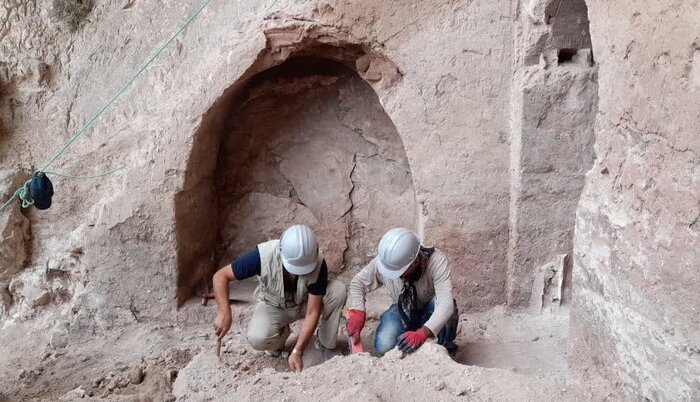Archaeological dig uncovers military workshop in cave northern Iran

TEHRAN - Evidence from an ancient military workshop as early as the Sassanid era, from 224 CE to 651, has been found by archaeologists in the Sepahbod-Khorshid Cave, northern Iran.
The discovery was made by a team from the Research Institute of Cultural Heritage and Tourism in September, which yielded diverse fresh clues about Sassanid involvement in the mountainous region, ILNA reported on Wednesday.
Measuring 80 by 100 meters, the cave’s rounded entrance is said to be the largest natural one in the world.
“An arms making workshop was discovered in the area, in addition to a metal melting furnace and all kinds of war tools, from arrowheads, daggers, and harpoons to swords, and even half-made swords,” a local official said.
“Moreover, the archaeologists discovered arrays of metalworking artifacts, molds, and a sand casting (also known as sand molded casting) that suggest the cave was used as a factory for military tools,” the official added.
Moreover, the archaeologists discovered a special clay seal that bears depictions of horse and Phenix, rabbits, and Pahlavi script, the official added.
According to Mazandaran province’s deputy tourism chief, it was the first time that Sepahbod-Khorshid underwent excavation.
Narratives say the cave was the latest Persian stronghold against the Arab conquerors.
Situated in Savadkuh highlands, the cave was reportedly used as a shelter by Khorshid (“The sun”), the last ruler of Tabarestan, then surrounded by Arab invaders for several months and seized after poisoning its drinking water supply.
Access to the cave needs climbing gear and also expertise in alpinism. On the left side of the cave, a four-story-high castle was built; made of stones and mortar, it is the masterpiece of architecture of its time. On the right side, numerous trenches and defensive buildings were built, all of which remained firm and intact after centuries.
These two parts were connected through a road made of stones and mortar. Two meters wide, this road was built 50 meters above ground level. Today, only traces of it remain. The remains of a cistern, several silos, and numerous defensive monuments are located outside the cave.
Sandwiched between the towering Alborz mountain range and the Caspian Sea, Mazandaran has a rich yet turbulent history. An early civilization flourished at the beginning of the first millennium BC in Mazandaran (Tabarestan).
AFM
